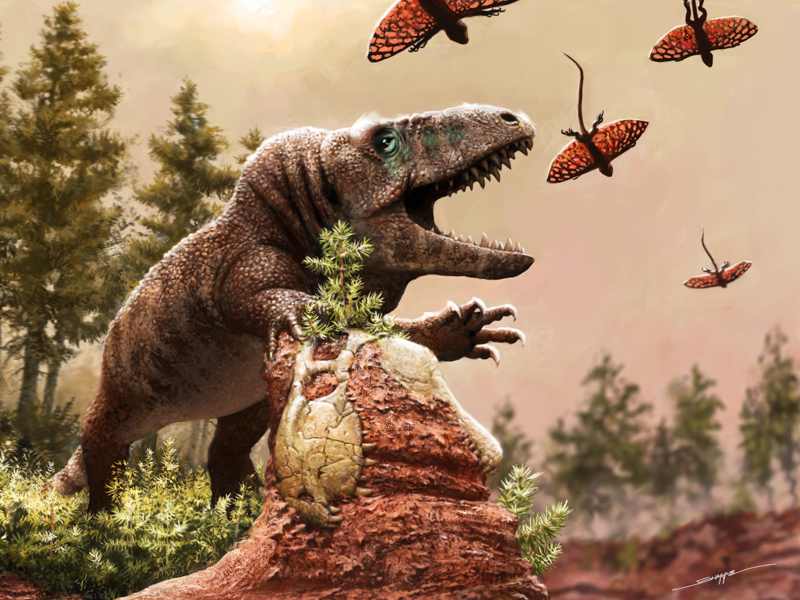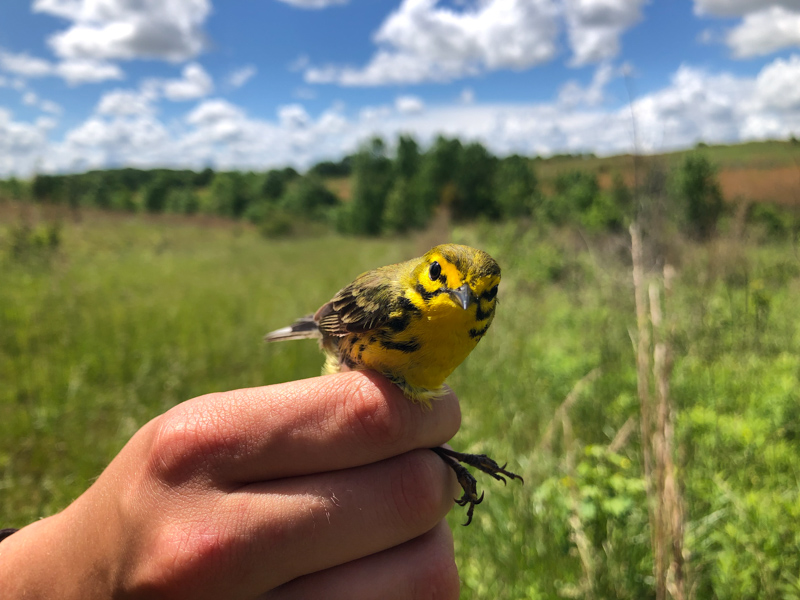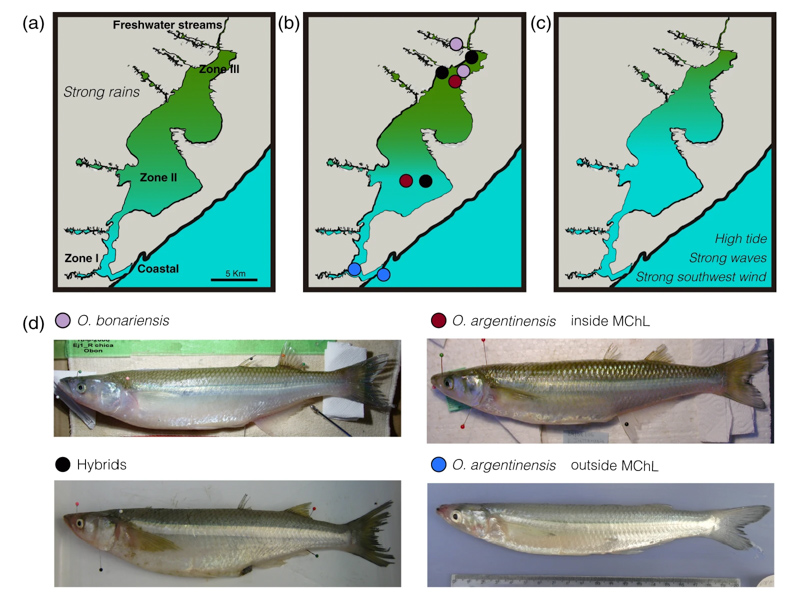
Global warming spawned the age of reptiles
August 19, 2022
Artistic reconstruction of the reptile adaptive radiation in a terrestrial ecosystem during the warmest period in Earth’s history. Image depicts a massive, big-headed, carnivorous erythrosuchid (close relative to crocodiles and dinosaurs) and a tiny gliding reptile at about 240 million years ago. The erythrosuchid is chasing the gliding reptile and it is propelling itself using… Read More >

Flight Interrupted — Bird Banding in Central NC
August 17, 2022
During mating season, migratory Prairie Warblers are found in overgrown shrubs and along the edges of regrown forests throughout the East Coast and much of the Southern United States. Photo: Cameron Stuart. By Cameron Stuart, NCMNS Marketing & Communications Intern Museum ornithologist John Gerwin drove his van slowly down a grassy, bumpy path into the… Read More >

Silversides’ Surprising Hybridization
August 5, 2022
Salinity and species distribution in the Mar Chiquita Lagoon under variable environmental conditions. Image: Yamila P. Cardoso. Summary – Lily C. Hughes, Ph.D., the Museum’s Curator of Ichthyology In Buenos Aires province, Argentina, the Mar Chiquita Coastal Lagoon is an estuary that has been designated a UNESCO Biosphere Reserve due to its rich biodiversity and… Read More >

Extraterrestrial Amino Acids Fall to Earth
July 13, 2022
By Dr. Rachel Smith, Head, Astronomy & Astrophysics Research Lab and Curator, Meteorites On August 25, 2020, over the Moroccan Sahara near the village of Tarda, a rock from space was seen as a blazing fireball falling to Earth. As it exploded, pieces of the rock that survived the journey – the Tarda meteorites –… Read More >

NC Science Museums Grant Program awards $2.4 million to 55 science centers
July 11, 2022
[RALEIGH, N.C.] – From the North Carolina Estuarium to the Highlands Biological Station, 55 science centers across the state have been awarded a total of $2.4 million in grants as part of the sixth year of the North Carolina Science Museums Grant Program. The program is one of the many ways that the State of… Read More >

